Leather is a popular material for furniture, clothing and accessories. But when leather starts to bubble up, it can be an unsightly sight! This article will explore what causes leather to bubble, how to prevent it from happening in the first place and what you can do if your leather has already started bubbling.</
Why Does Leather Bubble?
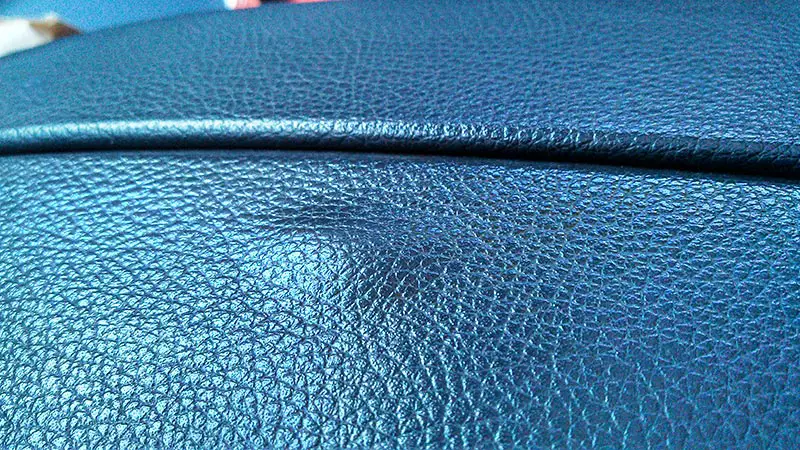
Excessive Moisture
The most common cause of leather bubbling is excessive moisture. Leather is a porous material, so it absorbs and holds onto moisture that comes into contact with it. When too much water builds up in the leather, it can cause the fibers to swell and separate, creating an unsightly bubbled surface.[2]
Dirt
Dirt and grime can also cause leather to bubble. Dirt, oils, and other substances become trapped in the leather’s pores, preventing it from breathing properly. As these substances accumulate over time, they can create an uneven surface that causes bubbling or tiny bumps in the leather.[2]
Pressure Marks
Another cause of leather bubbling is pressure marks. Pressure marks occur when an object such as a belt buckle or necklace lays on top of the leather for an extended period of time, leaving behind an impression in the material. This impression can cause the leather to bubble up around it as it tries to fill in the space left by the object.[2]
Bad Quality Leather
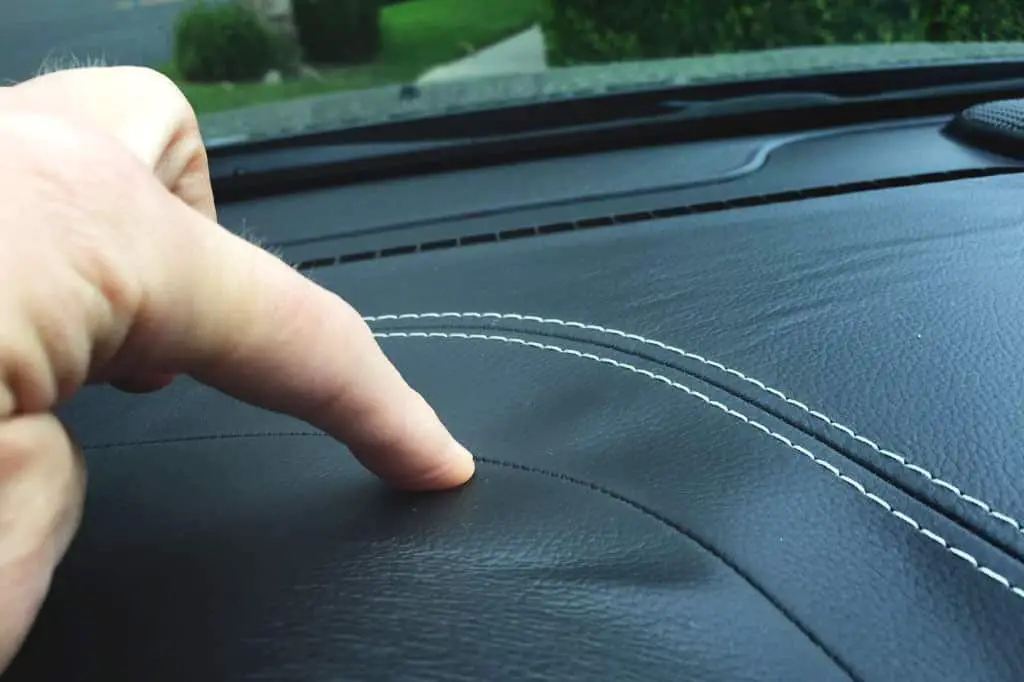
Finally, bad quality leather can also cause bubbling. Low quality leather is often made of synthetic fibers that cannot stand up to wear and tear. Over time, these fibers will start to separate from one another, resulting in a bubbled surface.[2]
Chemical Cleaners
Using the wrong kind of chemical cleaner can also damage leather, resulting in bubbling. Chemical cleaners should only ever be used on leather that is specifically labeled as “stain-resistant”. Using a chemical cleaner on regular leather can strip it of its natural oils and cause the fibers to swell and separate, leading to bubbles.[2]
Excessive Cleaning Over Leather
Even if the right kind of cleaner is used, leather can become damaged from too much cleaning. Over-cleaning leather can strip it of its natural oils and cause the fibers to break down over time, resulting in bubbling.[2]
Sun
Exposure to sunlight can also cause leather to bubble. Sunlight can break down the natural oils in the leather, making it more vulnerable to damage. Over time, this can lead to bubbling as the fibers separate and swell.[2]
Heat
Heat can also cause leather to bubble. Leather should always be kept away from direct heat sources such as open flame, radiators, or space heaters. Prolonged exposure to too much heat will cause the leather fibers to break down and separate, resulting in bubbling.[2]
Adhesives
Using the wrong kind of adhesive on leather can also cause bubbling. Adhesives that are not specifically formulated for use on leather can damage the fibers, resulting in a bubbled surface.[2]
Excessive use of leather cleaners
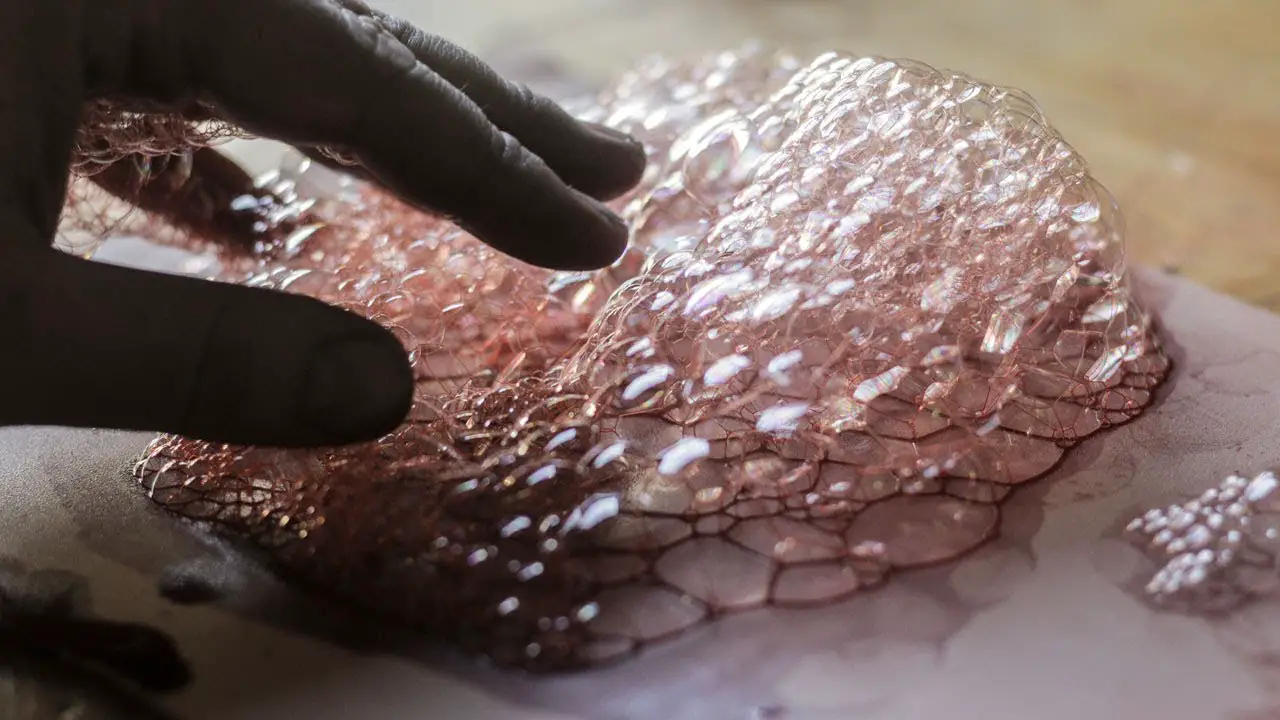
Leather cleaners should be used sparingly and only when absolutely necessary. Overusing leather cleaners can strip the material of its natural oils, leaving it vulnerable to damage.[2]
Harsh chemical cleaners
Using harsh chemical cleaners on leather is never a good idea. Harsh chemicals can damage the leather’s fibers, leading to discoloration, cracking and bubbling over time.[2]
Moisture and humidity
Excessive moisture and humidity can also cause leather to bubble. Leather should be kept away from direct sources of water, such as sinks, showers and swimming pools. Prolonged exposure to high levels of moisture will damage the leather’s fibers over time, resulting in bubbling.[2]
Body oil build-up
Over time, body oils can build up on leather. This will cause the fibers to break down and separate, resulting in a bubbled surface. To prevent this, leather should be wiped down regularly with a dry cloth or lightly dampened with a pH-neutral leather cleaner.[2]
Heat and sun exposure
Leather should also be kept away from direct sources of heat and sunlight. Prolonged exposure to high levels of either one will damage the leather’s fibers, resulting in bubbling.[2]
Pressure marks
Finally, objects such as belt buckles or jewelry can leave pressure marks on leather. These marks can cause the fibers to break down and separate over time, resulting in a bubbled surface. To prevent this, keep any heavy objects off of your leather items.[2]
Ways To Fix Bubbling On Your Leather?
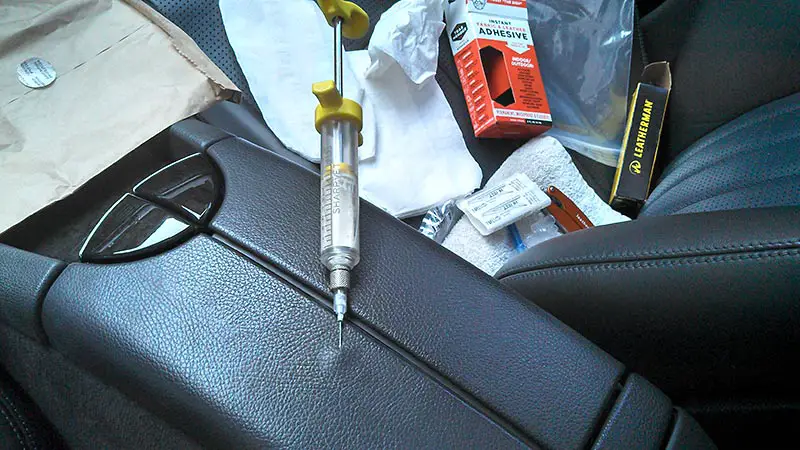
Use Something Heavy
If the bubbling on your leather is minor, you can often flatten it out by simply placing something heavy on top of it. It could be a large book or anything else that is reasonably weighty and will fit over the area of bubbled leather. Make sure that whatever you are using does not have a rough surface as this can cause issues with the leather itself.[1]
Use Heat and Cold Pressure
If the bubbling is more pronounced, you may need to employ a combination of heat and cold pressure. To do this, take a hairdryer set on its highest setting and apply it to the affected area. This will soften up the leather enough so that you can press down with an ice pack or something similar such as a bag of frozen vegetables. The cold pressure will force the leather to lie flat, while the heat from the hairdryer will help it to stay that way.[1]
Use Steam
If you don’t have an ice pack to hand, steam is another good option for flattening out bubbled leather. Take a kettle of boiling water and hold it over the affected area from a safe distance. The heat and steam should do the job of softening up the leather. Then, use something heavy as described above to press down on the area until it has flattened out.[1]
Use Professional Help
If you’re unable to fix the bubbling using any of these methods, or if the leather is particularly delicate, it’s best to seek professional advice from a leather specialist. They will be able to recommend the best course of action for your particular item and may even be able to repair it for you.[1]
Use a Popping Tool
In some cases, a professional leather repair tool called a popping tool may be used to fix the bubbling. This is a specialized device that is designed specifically for flattening out leather.
Applying pressure over the bubble
If you don’t have access to any heavy objects, an ice pack, steam or a popping tool, then you can attempt to fix the bubbling by applying pressure over it with your own hands. Take your index finger and thumb and press down firmly on either side of the bubble. This should help to flatten out the leather without causing damage to it.[1]
Heat gun method
Another way to flatten out bubbled leather is to use a heat gun. Heat guns are designed to generate high temperatures and can be used on certain types of leather. To use a heat gun, place it over the affected area until the leather has softened up enough for you to press down on it with something heavy. Be sure to keep the heat gun at a safe distance and only use it on leather that can withstand the heat.[1]
Syringe and glue method
If the bubbling is caused by a tear in the leather, you may be able to fix it using a syringe and glue. First, fill the syringe with a strong adhesive such as epoxy or superglue. Then, carefully inject it into the area of damage. Finally, use something heavy to press down on the area until it has flattened out.[1]
How to prevent leather bubbles?
There are several ways to prevent bubbles from forming in your leather. Here are some of the most effective methods:
- Clean regularly. Regular cleaning with a mild soap and warm water can help keep leather supple, preventing it from getting brittle and prone to bubbling. It is also important to condition the leather after cleaning, as it will help protect the leather from dryness and cracking.
- Avoid direct sunlight. Keeping leather away from direct sunlight and other sources of heat can help prevent it from drying out and becoming brittle, which then leads to bubbling. Make sure you store your leather items in a cool, dry place with adequate air circulation.
- Clean spills quickly. Spills should be cleaned as soon as possible in order to prevent them from staining the leather and causing bubbling. Make sure you use a dry cloth or paper towel to blot away any liquid before cleaning with a mild soap and water solution.
- Use a leather protector. Leather protectors can help provide a barrier against spills, as well as keep your leather soft and supple. You can find leather protectors in most shoe stores or online.
- Invest in quality leather. It’s important to invest in high-quality, full-grain leather to prevent bubbling. Full grain leather is more expensive but it will provide better protection from the elements and last longer than other types of leather.[1]
FAQ
What is bubble leather?
Bubble leather, also known as cracked leather or alligator leather, is a type of distressed leather that has been treated with heat and pressure to produce an uneven, bubbled texture. The process of creating bubble leather can cause the material to become brittle and prone to cracking over time.
How do you fix swollen leather?
The best way to fix swollen leather is to use a leather conditioner. This will help moisturize the material, reduce cracking, and restore its suppleness. If your item has been soaked in water or exposed to extreme heat, you may need to repair tears with a leather adhesive before applying the conditioner.
What makes the patent leather bubble?
Patent leather is a type of treated leather that has been sealed with a glossy finish. The heat and pressure used to create the glossy finish can cause bubbles in the material if it is not applied correctly. Applying too much heat or using an incompatible sealant can also lead to bubbling in patent leather.
Does patent leather go bad?
Patent leather can last for years if properly cared for, however, it is prone to cracking over time due to the heat and pressure used during the manufacturing process. To keep your patent leather in good condition, apply a leather conditioner regularly and avoid exposing it to extreme temperatures or moisture.
Can you put water on patent leather?
Although patent leather is waterproof, you should still avoid putting water directly on it. Water can damage the glossy finish and cause the material to crack or bubble if left on for too long. If your item does get wet, make sure to dry it thoroughly before storing it away.
Is water damaging to leather?
Yes, water can be damaging to leather if it is exposed for too long. Water can cause the material to become brittle, swell up, and crack over time. It’s best to avoid getting your leather items wet or exposing them to extreme temperatures as much as possible. Make sure to condition your leather regularly and store it in a cool, dry place when not in use.
Is it OK to wear patent leather shoes in winter?
Yes, patent leather shoes can be worn in winter if the temperature is not too cold. It’s best to avoid wearing them when temperatures are below freezing as this could cause the material to crack or bubble. Additionally, make sure to condition your shoes regularly and store them in a cool, dry place when not in use.
Can you fix patent leather?
Yes, it is possible to fix patent leather if the material has been damaged. If your item has cracks or bubbles, you can use a leather adhesive and conditioner to repair the damage. Additionally, if your patent leather shoes have become scuffed, you can use a shoe polish to restore their original shine.
Useful Video: Fixing a Dash Pad Air Bubble
Conclusion
No matter the cause, bubbling leather is a nuisance. But with proper care and maintenance of your leather items, you can avoid this issue and keep your leather in great condition. As always, prevention is better than cure!
Start by using a quality leather cleaner and conditioner to clean and moisturize your leather items regularly. This will help preserve the leather and keep it looking its best. Additionally, if there is anything spilled on the leather, avoid wiping it off with a damp cloth as this can disturb the grain pattern of the leather. Instead, allow spills to dry completely before gently brushing them away.
Hopefully this article has provided some insight into what causes leather to bubble and how you can avoid this issue in the future. With these tips, you can keep your leather items looking their best for years to come. Thanks for reading!
References
- https://leatherknowledge.com/why-leather-bubbles/
- https://theleathermakers.com/what-causes-leather-to-bubble-fix/

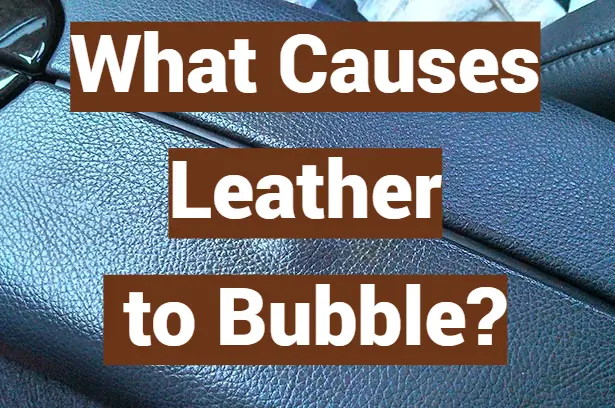
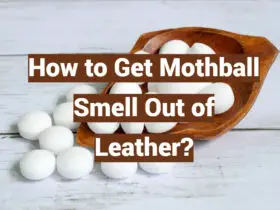
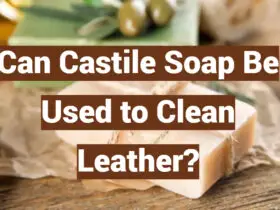
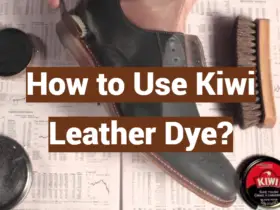
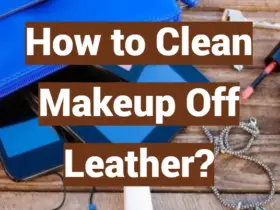

Leave a Reply